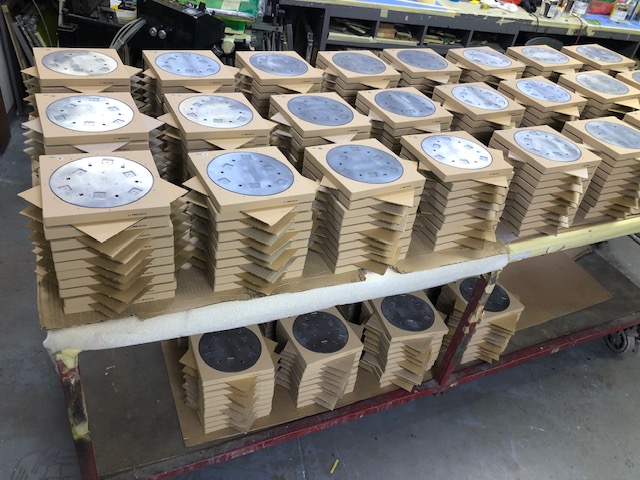MILITARY ∙ MEDICAL ∙ AEROSPACE ∙ ELECTRONICS ∙ SEMICONDUCTOR ∙ CONSTRUCTION
Passivation is a proven finishing process for metal surface (especially stainless steel) that increases resistance to corrosion and improves total performance. Passivation is a chemical treatment, most often using citric or nitric acid that removes unused iron and other contaminating materials from the surface of stainless steel, hence creating a an inert layer of oxide, one of the keys is preventing rust and lengthening the lifespan of the material. Although it does have limitations. Read on to learn more about the pros and cons of passivation.
The Pros of Passivation
- It improves corrosion resistance. Passivation removes contaminants from the surface and in doing so creates a stable layer of oxide, reducing the risk of rust in even the most difficult environments. It is a crucial component for medical, food processing aerospace and oil and gas industries.
- When compared to plating or coating, passivation is less costly. Not needing an addition layer of material, it strengthens the natural properties of stainless steel making it a very cost effective method of maximizing the durability of existing components.
- Passivation does not change the dimensions of part because it is a chemical rather than a mechanical process. This makes it ideal for precision instruments and components where the dimensions cannot be changed.
- As passivation removes contaminants including iron particles it gives off a cleaner and more uniform finish, often looking brighter and more attractive. In industries where sterility and cleanliness are uppermost, like medical device manufacturing, it is a considerable advantage.
- Passivation is widely recognized and documented in industry standards such as ASTM A967, AMS 2700, and ISO 16048. Meeting these specifications helps companies ensure quality, consistency, and compliance with regulatory requirements.
- Increasing surface stability and enhancing corrosion resistance, passivation lends itself to helping components last longer. In turn this reduces the cost of maintenance, potential downtime and the need for premature replacement, increasing the return on investment of any item.
The Cons of Passivation
- Although greatly effective of stainless steel and some high chromium alloys, passivation does not provide benefits on aluminum, copper alloys or carbon steel and if you are working with multi metals, you may have to look for other treatments for components not made from stainless steel.
- Everything must be thoroughly cleaned before passivation as any residue or dirt can get trapped on the surface – this compromises the process and can lead to corrosion issues.
- The nitric acid use in passivation requires very strict handling procedures, the correct ventilation and disposal so both the environment and workers are kept safe. Citric acid is safer but may not be a good substitute in all cases.
- Although passivation can significantly slow down the rate of corrosion, it does not mean the steel is immune. Tough environments, such as extreme temperatures, chlorine or saltwater can still cause corrosion to stainless steel over time
- Passivation is always going to be an additional step in the process for manufacturers. Although there are great benefits to passivation it does mean additional cost and time to what can already be crowded manufacturing schedules.
Looking At Both Sides
Passivation remains one of the most effective ways to enhance the natural properties of stainless steel. Its ability to provide superior corrosion resistance, maintain dimensional accuracy, and deliver long-term durability makes it a go-to solution for industries ranging from aerospace to medical. Still, it’s important to be aware of its limitations and ensure it’s applied under the right conditions.
If you’re exploring passivation for your stainless steel components, consult with experts who understand the process, the standards, and your specific industry needs.


